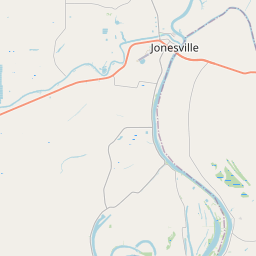The Blues Trail: Mississippi to Louisiana
Historical marker location:






Louisiana and Mississippi have long shared a close musical relationship. One of the most important musical paths was that between Natchez and Ferriday, where African American entrepreneur Will Haney operated Haney’s Big House for several decades. In addition to major national acts the club featured local musicians including Ferriday’s Leon “Pee Wee” Whittaker and Natchez’s Hezekiah Early and Y. Z. Ealey. A young Jerry Lee Lewis often visited the club, soaking up the sounds of the blues. Lousiana and Mississippi are both world famous for music, so it is hardly surprising that the neighboring states have had plenty of musical interchange over the years. The traveling circuit for New Orleans musicians usually included stops on Mississippi’s Gulf Coast, while Mississippi Delta artists often crossed the river to play at clubs in Ferriday, Waterproof, Tallulah, and Monroe. The Shreveport-based Jewel and Ronn labels released records by Mississippi natives or residents Artie “Blues Boy” White, Frank Frost, John Lee Hooker, Sunnyland Slim, and Rev. Willie Morganfield, among others, while the Excello label’s Mississippi-born bluesmen Jimmy Anderson and Whispering Smith recorded in Crowley, Louisiana. New Orleans artists Dr. John, Huey “Piano” Smith, Earl King, Bobby Marchan, and James Booker recorded for Johnny Vincent’s Jackson-based Ace Records. New Orleans’ Mardi Gras Records released CDs by Jimmy Lewis, the Love Doctor, and others, along with a two-volume collection entitled Mississippi Burnin’ Blues. Mississippi-born blues artists Eddie “Guitar Slim” Jones, Babe Stovall, Little Freddie King, and record producer Senator Jones all settled and recorded in the Crescent City. Ferriday’s major contribution to this interchange came via Haney’s Big House, which featured leading blues and R&B acts including B. B. King, Little Milton, Bobby “Blue” Bland, Roy Brown, Solomon Burke, Percy Mayfield, Big Joe Turner, Ray Charles, Johnnie Taylor, and Irma Thomas. Located on the 500 block of 4th Street (now East Wallace Boulevard), the club was run by African American businessman Will Haney (1895-1972), a first sergeant in the Army during World War I who later worked as an insurance agent. Property records suggest Haney bought the lot that housed the club in March of 1945. In its heyday the club featured about fifty tables and served food around the clock. Haney’s other business interests included a hotel located behind the club. Local musicians who performed at the club included trombonist Leon “Pee Wee” Whittaker (c. 1906-1993), a native of Newellton, Louisiana, who performed for years with the Rabbit Foot Minstrels out of Port Gibson, Mississippi. In the 1950s, when Ferriday was “wide open” for gambling and entertainment, he led the house band at Haney’s and hosted a radio show, “Peewee & His Rock & Roll,” on KFNV. A frequent visitor to the club in the early ‘50s was local pianist Jerry Lee Lewis. House bands were also led by Natchez natives Y.Z. Ealey (b. 1937) and Hezekiah Early (b. 1934), who had earlier played the club with Natchez guitarist John Fitzgerald and singer Elmo Williams. Whittaker later played in Early’s band, Hezekiah and the Houserockers, for nearly 30 years.
218 Louisiana Street in Ferriday, Louisiana, across from Natchez
Louisiana has a rich culinary history and is known for dishes such as gumbo, jambalaya, and crawfish étouffée. The state's cuisine is heavily influenced by French, African, and Native American cooking traditions.
The antebellum period brought great prosperity to Concordia Parish, with many wealthy plantation owners accumulating vast fortunes. The parish became a hub for the slave trade, as enslaved people were bought and sold at auctions in the area. This dark chapter of history is still felt today, as descendants of those enslaved people continue to reside in the parish.
The Civil War had a profound impact on Concordia Parish, as it did throughout the South. The plantation economy was devastated, and the region struggled to recover in the post-war years. Despite these challenges, the parish slowly rebuilt its economy, with cotton still playing a significant role. The arrival of the railroad in the late 19th century helped to revive the economy further, facilitating transportation and trade.
In the 20th century, the economy of Concordia Parish diversified as industries such as timber, oil, and gas gained prominence. The parish also became known for its rich hunting and fishing grounds, attracting outdoor enthusiasts from near and far. Today, Concordia Parish is a vibrant mix of agriculture, industry, and natural beauty, with a strong sense of history and community that shapes the lives of its residents.
Concordia Parish Timeline
This timeline provides a condensed summary of the historical journey of Concordia Parish, Louisiana.
- 1807 - Concordia Parish is established as a part of the Territory of Orleans.
- 1811 - The Mobile Gazette reports that the Concordia area is in a state of alarm due to violence and robbery.
- 1820 - The town of Vidalia is laid out as the first permanent settlement in the area.
- 1828 - Vidalia becomes the parish seat of Concordia Parish.
- 1861 - The American Civil War begins, and Concordia Parish joins the Confederacy.
- 1863 - Vidalia is occupied by Union forces for most of the Civil War.
- 1886 - The Concordia Parish Courthouse is completed.
- 1898 - The Vidalia Cotton Mills, the first cotton mill in the parish, opens.
- 1927 - The Great Mississippi Flood devastates Concordia Parish.
- 1945 - The Central Louisiana Electric Company brings electricity to Concordia Parish.
- 1982 - The Vidalia Bridge, connecting Vidalia with Natchez, Mississippi, opens.
- 2005 - Hurricane Katrina causes significant damage in Concordia Parish.